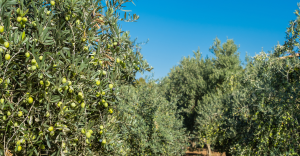The energy transition has reached the countryside. More and more rural properties are seeking alternatives to traditional energy supply models, driven by three main factors: the high cost of conventional tariffs, the need for self-sufficiency to maintain productivity, and the growing appeal of sustainability in national and international markets.
According to a study by FGV, Brazilian agribusiness already accounts for about 29% of all renewable energy produced in the country, demonstrating the sector’s leading role in this movement. For producers who want to increase their energy efficiency, reduce operational costs, and add value to production, investing in renewable sources has ceased to be just a trend and has become a viable and accessible strategy.
Solar energy in the countryside: from trend to reality
Among renewable energy sources, photovoltaic solar energy has undoubtedly grown the most in recent years in rural areas. Its appeal lies in the possibility of generating one’s own electricity, drastically reducing the electricity bill—especially in systems that require irrigation, climate control of facilities, or food processing.
There are two main implementation models:
- On-grid: connected to the public grid, with energy credit compensation.
- Off-grid: standalone system, with batteries to store energy in locations without access to the grid.
For producers with tighter budgets, there are specific rural financing lines—such as Pronaf Eco and state programs—that facilitate the acquisition of systems. In addition, the use of solar energy can go beyond electricity supply, as in agrivoltaic systems, which combine energy generation with agricultural cultivation in the same area.
Biomass: turning waste into energy
Another increasingly explored alternative is the use of biomass, especially from agricultural waste abundant in Brazil—such as sugarcane bagasse, rice husks, corn straw, wood residues, and even animal waste.
With the use of technologies such as:
- Biodigesters (biogas production)
- Gasification (thermal transformation of biomass into fuel gas)
- Direct combustion (burning to generate heat or electricity)
It is now possible to use by-products that were previously discarded to generate thermal or electrical energy on the property.
The experience with cashew bagasse biochar, previously reported on the channel, exemplifies how the use of waste can reduce emissions and increase profitability. Read more at: Carbon reduction with cashew bagasse biochar.
New models: hybrids, microgrids, and cooperatives
The reality of the Brazilian countryside is diverse. In some regions, connection to the electrical grid is still unstable or nonexistent. In others, there is a surplus of energy production that could be shared. Therefore, solutions such as these have been gaining ground:
- Hybrid systems (solar + biomass, for example), which increase energy stability;
- Rural microgrids, which connect several properties to a common source;
- Renewable energy cooperatives, which allow shared generation and cost reduction in rural communities;
- Intelligent battery storage, especially in remote regions.
These solutions pave the way for distributed generation, with less dependence on large utilities and more autonomy for the producer.
Economic and environmental benefits for the producer
In addition to reducing the electricity bill, adopting renewable sources in the countryside brings several medium- and long-term advantages:
- Reduction in operational costs
- Appreciation of rural property value
- Access to markets that prioritize sustainable practices
- Possibility of generating carbon credits, monetizing emissions reduction
- Compliance with environmental requirements and certifications
This movement also directly contributes to Brazil advancing its international climate goals, with agribusiness as an active agent in the transition to a low-carbon economy.
Challenges and what lies ahead
Despite advances, there are still barriers that need to be overcome:
- Bureaucracy in the regulation of distributed generation
- Lack of technical knowledge in smaller properties
- High initial cost in some regions
- Lack of specialized technical assistance
The training of producers and technicians, together with the strengthening of public policies, will be essential to expand adoption on a large scale. COP30, which will take place in Brazil, may accelerate this process by putting the sustainability of the Brazilian countryside at the center of global attention.
The energy transition is already happening in the countryside — and the producer who anticipates it will be ahead. With planning, access to information, and the right investment, it is possible to make the property more efficient, sustainable, and competitive. Brazilian agribusiness has everything it takes to lead this revolution, combining productivity with environmental responsibility.
Tags





